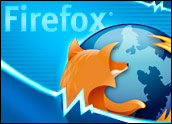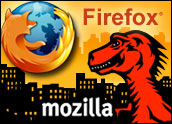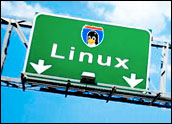
Novell this week unveiled what it calls “significant enhancements” to the Xgl (X over OpenGL) graphics subsystem. Xgl is new core rendering technology for theLinux desktop that takes advantage of now widely available accelerated 3D rendering hardware.
These enhancements are designed to let developers create richer graphical experiences for Linux desktop users. By making the desktops more streamlined, they will increase productivity and more firmly position Linux at the forefront of client computing technology, according to Novell.
“The release of Xgl and the accompanying ‘Compiz’ compositing/window manager puts Linux at the forefront of desktop graphics capabilities among all operating systems,” said Nat Friedman, Novell vice president of Linux desktop engineering.
Novell’s Bragging Rights
Xgl graphics subsystem enhancements and the Compiz framework are the latest additions to the openSuSE project. Sponsored by Novell, openSuSE.org is a community-based effort that involves developers worldwide in the review, testing and ongoing development of SuSE Linux with the goal of making it accessible to end users.
Open-source developers can now use their creativity to build new special effects and user interface paradigms as plug-ins to Xgl/Compiz.
Novell’s release of Compiz enables developers to create graphical plug-ins that deliver visual effects, including transparency and advanced animation.
For the first time, open-source developers can easily add industry-standard effects like transparency and window animations to the Linux desktop, Novell said, supported on the broadest possible set of hardware.
“No other platform gives you this capability. Novell is a key contributor to the next generation of Linux platform innovation,” Friedman said.
Industry Support
Hardware and software vendors are expressing strong support for Xgl while open-source community members agree today’s enhancements clearly and positively impact the state of the art of Linux desktop graphical capabilities.
“Novell’s work on Xgl demonstrates the kind of focused innovation that the Linux desktop needs in order to thrive in today’s market,” said Mozilla CTO Brendan Eich. “Users should expect to harness the full power of their modern graphics hardware in all aspects of their work and play, andXgl is a major step towards making that a reality.”
“HP is confident that usability and visual enhancements to the Linux desktop experience will fuel even more growth within this emerging market,” said HP Vice President of Open-Source & Linux Organization Christine Martino.
No Silver Bullet
There is no guarantee that the new enhancements will encourage enterprise adoption of Linux on the desktop, however.
“You can run a Linux desktop if you try really hard, but there’s not a lot of economic sense in doing it today,” said Burton Group Analyst Gary Hein. “[The absence of] whizbang graphics on the desktop is not what’s holding back enterprise adoption.”
While Xgl will give Linux more eye candy and better desktop performance, it doesn’t make up for the lack of applications and a missing business justification, he told LinuxInsider.
“At the end of the day, a business person is going to look at how this affects licensing costs, support costs and application costs,” Hein said. “With the cost of a Windows desktop for an enterprise being less than US$100, it’s really hard to [show] a cost savings by going to a Linux desktop.”




















































